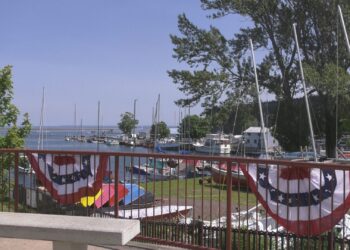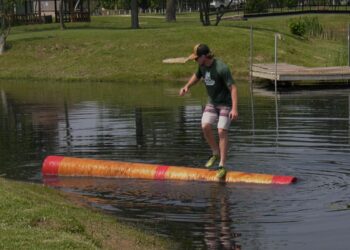GWINN, Mich. (WZMQ) – Air tanker planes have become instrumental in helping fight wildfires across the country, and currently, there are two stationed at the Marquette Sawyer Regional Airport, waiting to be called to action. A plane that can deliver water at as low an altitude as 100 feet, air tankers are built with what’s called an aerial firefighting engine, able to withstand higher temperatures. “This is a CL415 super scooper, it’s an amphibious water bombing airplane,” commented AeroFlite Captain Pat Goodrich.
They’re considered a boat with wings and these aircraft can carry over 13 thousand pounds of water across the country to help ground crews put out those wildfires. “We can fly this aircraft very maneuverably down low at 47 thousand pounds because we’ve got the very powerful engines and the big thick wing,” continued Goodrich.
In the back of the plane, the probes will fill up the tanks and are then ready to go douse the fire again. “There’s two of ’em one on each side and these are all that we scoop water with so these right here in 12 seconds will scoop 1600 gallons into the airplane,” said Goodrich.
Bomb flaps are right next to the scoops of the plane, which can either deliver the water at different time increments, or all at once if needed.
“We have four of these underneath, two on each side so when we land in the water these bomb doors are tucked up tight they’re all the way up and they’re flush with the bottom of the aircraft,” continued Goodrich.
In the air with a crew of two, the pilot and copilot will land on the water, fill the tanks and make their way to the active wildfires.
“That’s where this airplane shines you can get out on what we call the initial attack a small fire that’s starting to burn in a critical area…we give them that head start we can get in there, tamp it down almost put it out, and that gives them enough time to get there,” said Goodrich.
The aircrafts are considered crucial assets to the country when battling wildfires, as they can get in the air within 15 minutes of hearing of a fire, to either give the ground crews a cushion of time to respond to the fire or can even put it out entirely.


















